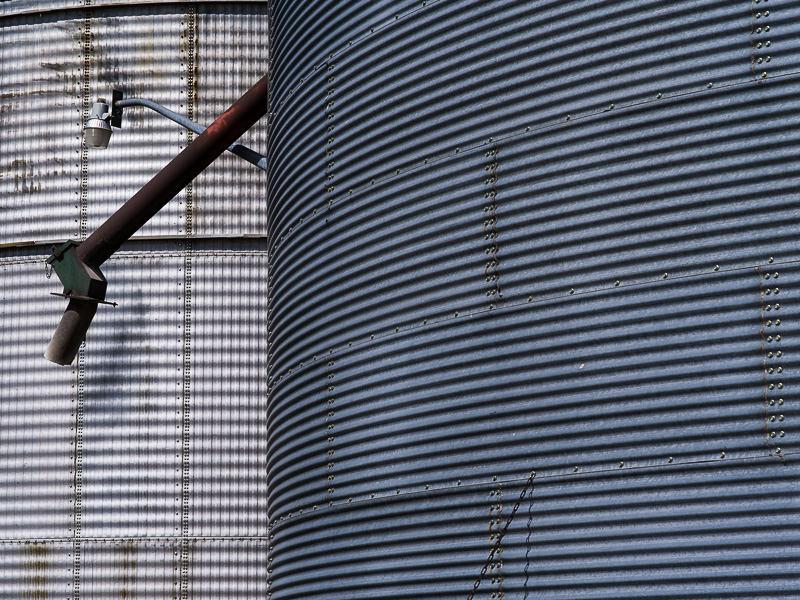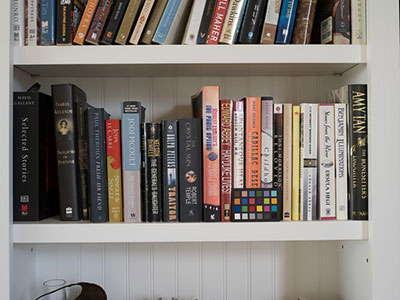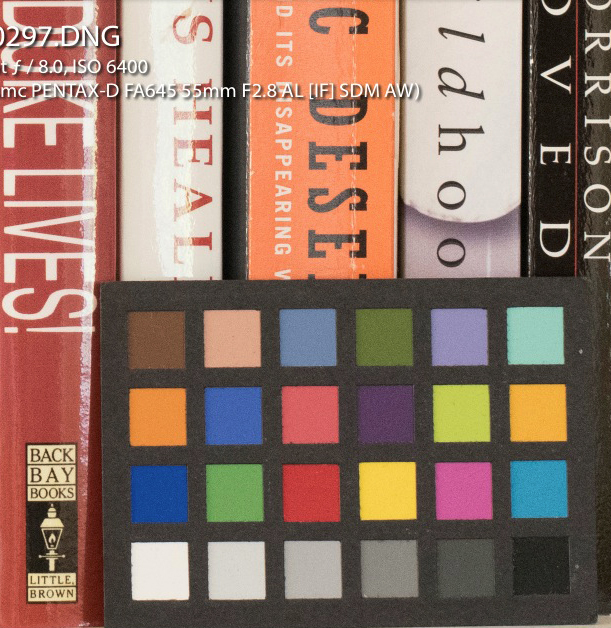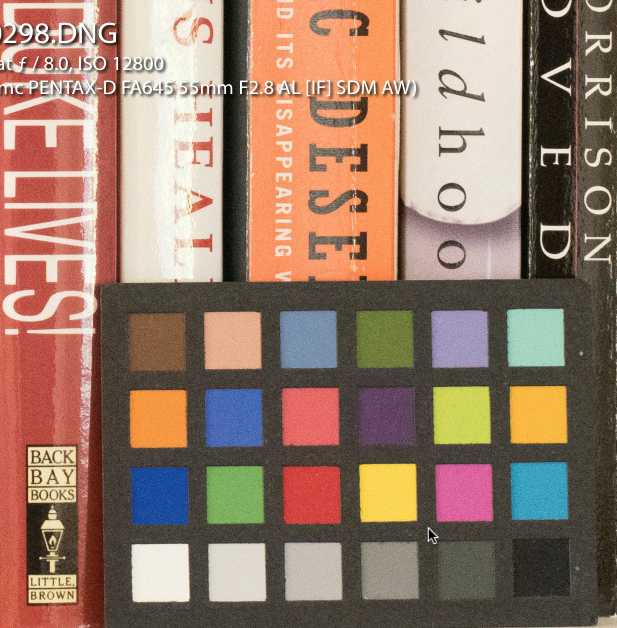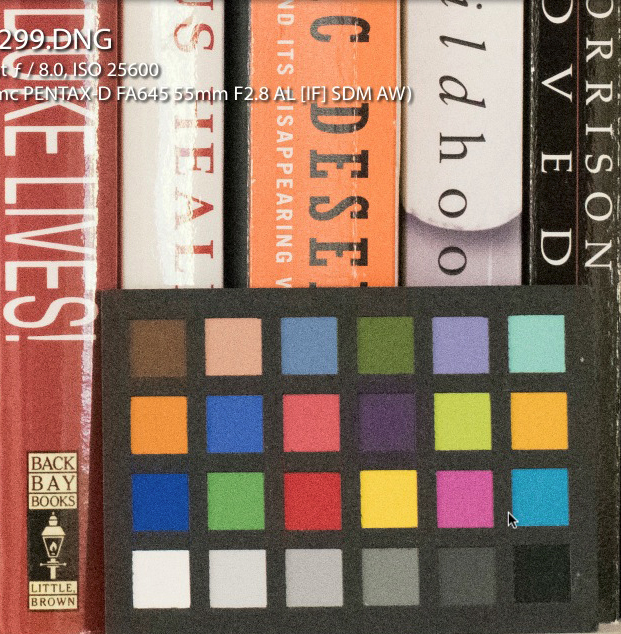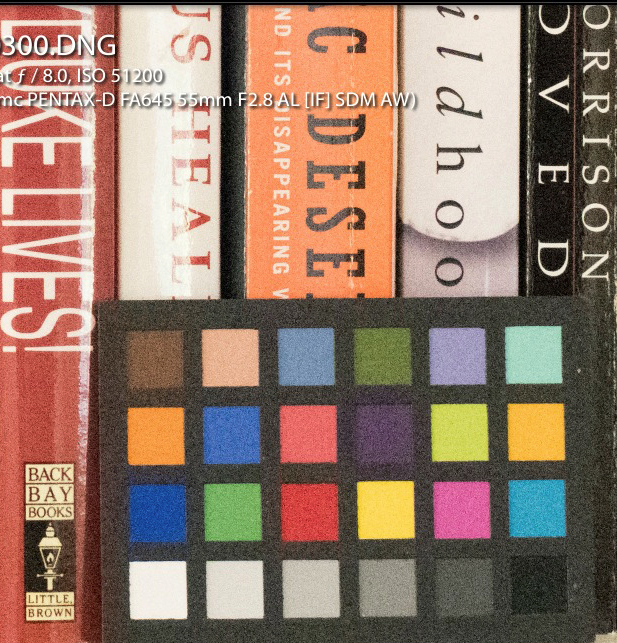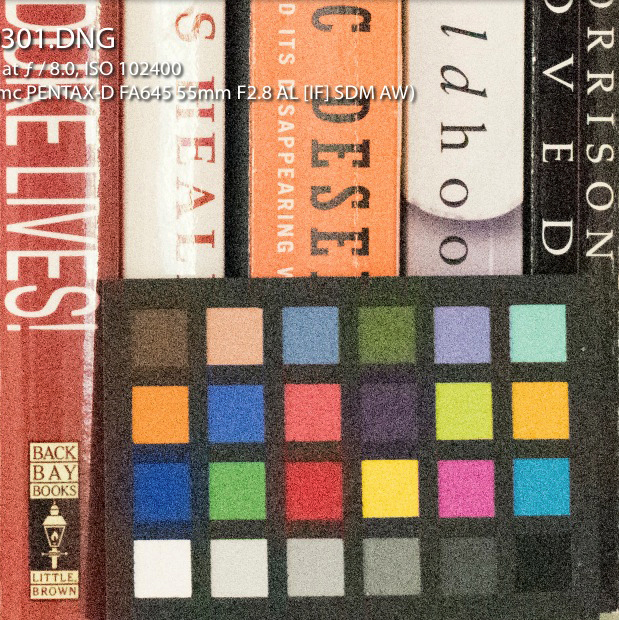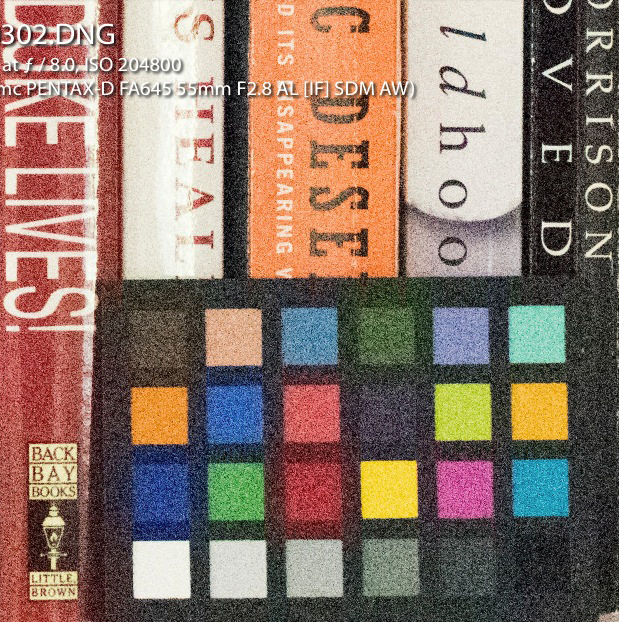Pentax 645Z First Impressions Review
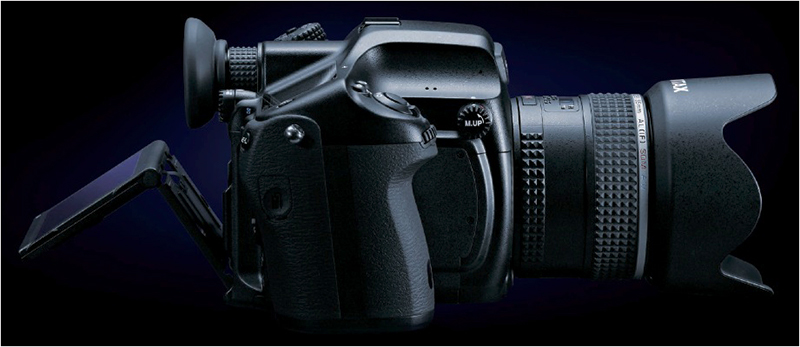
It was 2005 when Pentax first announced that they would be building a medium format digital camera. Unless your memory stretches back to pre-digital days you may not know that Pentax was one of the major medium format camera makers, with several very popular 645 and 67 format camera over several decades. But unlike many camera makers who were sideswiped by the digital bus, Pentax hung in and in 2010 delivered the Pentax 645D. Nick had some initial comments and an interview with Bill Gouge of Pentax Canada in September 2010, and a more comprehensive review of the camera in November of that year.
Now it's mid-year in 2014, almost seven years on, and Pentax has just started to ship their next-generationPentax 645Z. Though the "Z" looks a lot like the "D" a great deal has changed. Here then, for those who have not already memorized the product brochure, are the more salient points...
– 51.4 million pixels, 43.8 x 32.8mm large CMOS image sensor. This is the same Sony fabricated sensor as found in the Hasselblad H5D-50c and Phase One IQ250.
– 3.2" articulated 1.3M dot LCD with Live View and a large prism 98% coverage optical viewfinder system.
– ISO range from 100 – 204,800
– 3 fps continuous shooting
– 27 autofocus points including 25 cross-type sensors
– 1920X1080 HD video 60i/30p/24p
– video capability
Even a cursory look at the major specs shows that the most significant new feature is the use of Sony's new CMOS 43.8 x 32.8mm sensor, now also used by Phase One and Hasselblad. This is the first medium format CMOS sensor and consequently brings heretofore unavailable features in MF, such as higher frame rates and high ISO, as well as proper Live View and video capability.
Of course just because cameras use the same sensor doesn't mean that they are the same when it comes to image quality. The entire imaging pipeline from the sensor onwards is proprietary to each maker and therefore small to moderate difference (maybe even major ones) are to be expected.
Before going further, let's just clarify that strictly speaking 43.8 x 32.8mm is not what was called medium format in the film days. It is some 63% smaller than 645 film, though it is 1.7X larger than full frame 135mm format.
Got it? Does this really matter? It is what it is, and comparisons to film formats aren't really relevant. Just keep in mind though that this format has a .8X factor when it comes to calculating lens coverage. That's about the only thing that should be noted. Keep in mind as well that this is the same size as the sensor in the Leica S, and we don't hear too many people complaining about that.
User Interface
Next, let's consider the user interface and user experience of working with the 645Z.
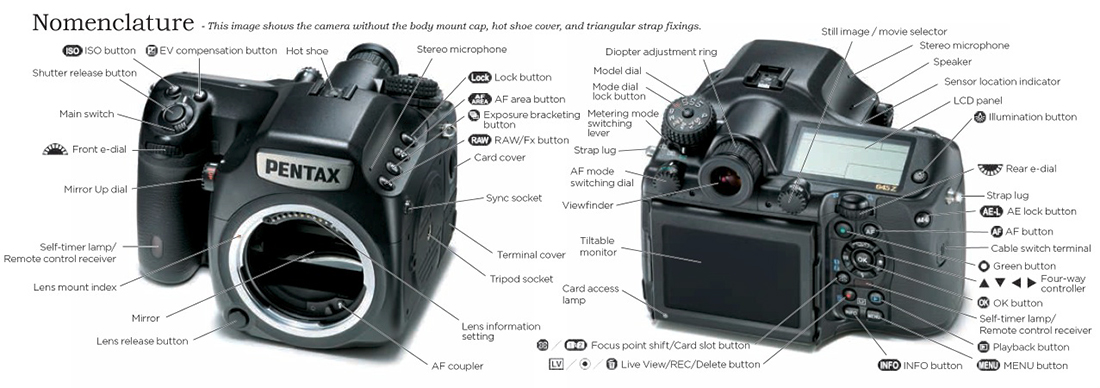 The chart above is there not to strain your eyesight, but rather to give you an impression of the strongest first impression that the 645Z gives – that is of their being a single dedicated external control for virtually every major and most minor functions. Whereas the smaller a camera gets the more controls have to be placed onto menus and custom functions, with a large camera such as the 645Z there is physical space to be allocated so that direct control is available.
The chart above is there not to strain your eyesight, but rather to give you an impression of the strongest first impression that the 645Z gives – that is of their being a single dedicated external control for virtually every major and most minor functions. Whereas the smaller a camera gets the more controls have to be placed onto menus and custom functions, with a large camera such as the 645Z there is physical space to be allocated so that direct control is available.
Depending on your age and experience in photography this may be seen as either a good thing, or a bad thing. Lovers of simplicity (the Leica S approach) will likely find the 645Z to be confusing and even intimidating. On the other hand, a photographer who wants to have every control at his or her fingertips, will consider the new Pentax to be just the ticket.
That said, we found a hard-to-quantify but nonetheless palpable 'thickening' of the control interface from the previous 645D. While there are only a couple more buttons, a number of the core controls lacked the transparency and fluidity of the original camera. It may be that over a period of time this will disappear for experienced users, but Pentax did over do it a bit here. The 'Green' button on the back is a prime example. It is a shamelessly modal control, and badly out of place on a camera where virtually every control is first-order obvious. The presence of JPEG WB controls on the four-way controller is another fail and a hold-over from the company's consumer APS-C cameras (Pentax is not alone in including ridiculous controls like this on the ubiquitous four-way). Auto ISO is a particularly badly implemented control, and we mention that below.
But we have to put these relatively minor critiques in context: the 645Z is light-years ahead of any other MF-class camera, and frankly better than just about all of the FF 35mm machines in user interface. Using a Phase or Hassy body is pure agony after handling a "Z". Many of the controls are blessedly well done, such as the pop-up menu that appears when one hits "INFO" during image review, which displays thumbnails of the four review options (eg: with or with histo, 3-colour histo, etc), between which one can quickly scroll.
The "Z" is still a great user's camera.
One simple example: I (Nick) still can't get the H4D I use to marry mirror-lockup to self-timer. And I have to reset all of this everytime I power-up. By contrast on the "Z", two touches on the controls puts you in 2-second self-timer to which mirror-lockup is automatically linked! It's almost like an actual photographer was involved in the design. Revolutionary.
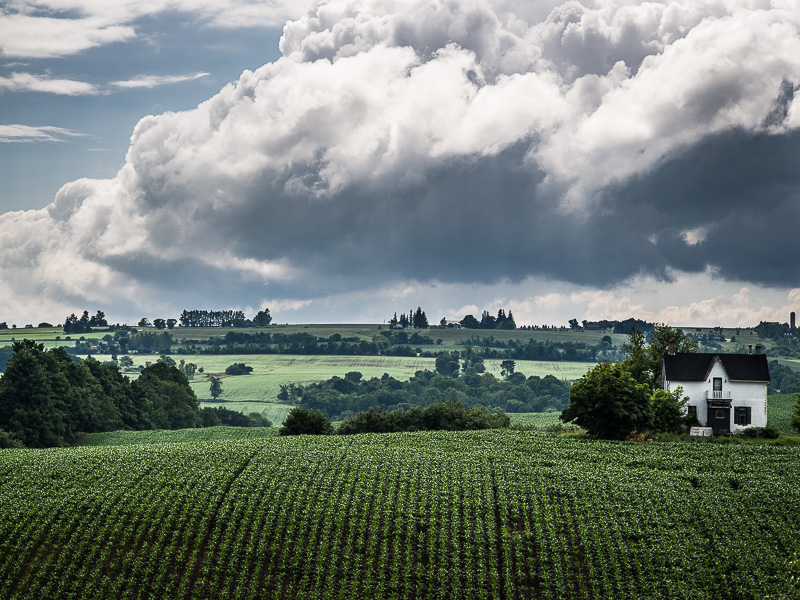 White house on the Hill, Clearview, Ontario, July 2014
White house on the Hill, Clearview, Ontario, July 2014
Pentax 645z, 120mm, 1/500th @ f8, ISO100
Focusing
One of the reasons Nick sold his 645D was that it had trouble focusing accurately at middle distances – a plague of MF cameras. In our brief testing the "Z" performed far better in this regard, not only as predicted in Liveview, but using the camera's phase-detect TTL AF system as well. Objects in the sub-infinity range – typical of landscape foregrounds – were tack sharp most of the time. Liveview contrast detection AF also worked well, as expected.
Focusing speed is fine. Not great, but fine. The newer lenses are predictably much faster and more positive than the older film-era screw-drives lenses, which had a distinct tendency to hunt. The worst offender was the 120mm macro, which may be because of its enhanced range and precision of focus. While it displayed a lot of 'jiggy" AF behaviour, the results were ultimately excellent. No one will be using these cameras for high-speed AF applications, so I just don't think this really matters.
In short, focus is not an issue. The only anomaly we did see was with the new 25mm lens, which produced some inexplicably mushy shots on a couple of occasions. We didn't have the camera long enough to drill-down on this, so I will make no more comment than to say this particular lens probably requires more serious attention when focusing on distant objects which have little texture on such a wide lens.
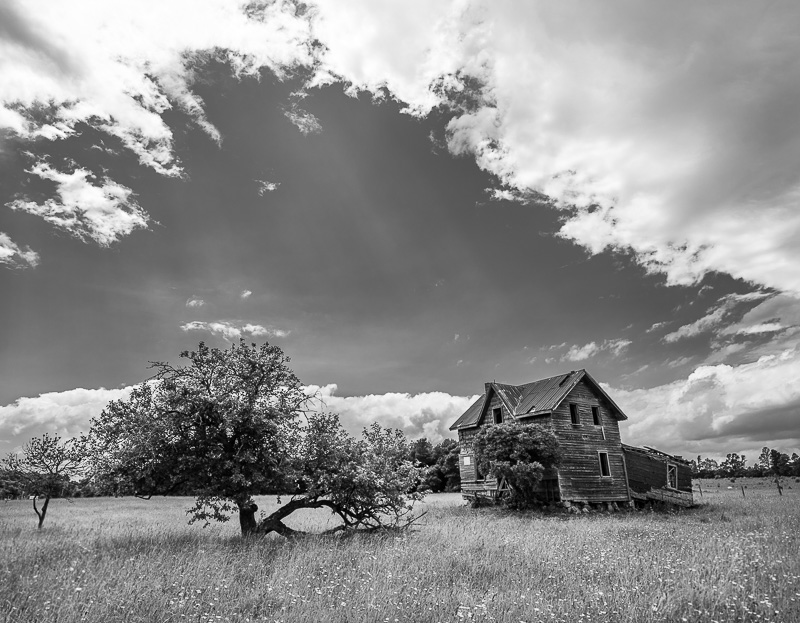 Affordable Starter Home, Clearview, Ontario, July 2014
Affordable Starter Home, Clearview, Ontario, July 2014
Pentax 645z, 25mm, 1/125th @f8, ISO 100
Live View
Live view with an articulated screen is a real pleasure with MF. The screen is better than either of its competitors simply because it can be brought to an appropriate angle no matter the position of the camera. Live View works. We are all used to it now, so there's not much more to say. Landscape photographers will enjoy this development a lot.
WIFI operation
We should mention the camera's WIFI capability here as a subset of Live View. Although WIFI is not built in, one can add it for a few dollars by purchasing the oddly named "FLU" SD card. One can then establish a browser-based link to the camera. As with the other Pentax SLRs, this gives full camera control from the linked device, including touch-focusable Live View control. Working off an iPad, this functionality operated well. I could see composing and focusing on an iPad, almost like a hand-held ground glass. How much better and/or more usable this is than the other ways of seeing with the camera would depend on the user and take some time to know, but it's nice to see this functionality on the "Z".
Tethering
The "Z" sports a USB3 plug. Cabled tethering is coming in the fall, we are told. This is a must-have for commercial pros, and I really, really hope Pentax gets it right. The announcement of true tethering is kind of a big deal, as Pentax made no effort to achieve this on the 645D, and thus cut-out a vast segment from its pool of potential customers. Its inclusion on this camera shows a real commitment to making a competitive system.
Image Quality
So this is the real money-question: is the IQ up to snuff and worth the money? The short answer is yes. The files off the "Z" are superb. Nick attempted some apples-to-oranges comparisons with the H4D-60, which were limited by the different ISOs, sensor sizes and focal lengths available to us. However, when matched like-for-like as closely as possible, the "Z" produced files which closely rivalled the larger 60MP CCD chip. That said, Nick could see what felt like a greater subtly of micro-contrast and colour subtlety on the Hassy files, which were challenging to reproduce on the "Z". With a lot of playing in post, however, the difference in files came down to a matter of taste, and a small one at that. If pushed, Nick would say that the Hassy file, at base ISO 50, was a bit more robust. Simply put, nothing can (yet) beat a big CCD at optimal operating conditions.
An attempt at a studio portrait yielded a further interesting, in unintended, result. The files from the Hassy produced unmatched skin tone. No real surprise there. But the "Z" wasn't that far off. In particular, the level of detail on both, and the smoothness of skin tonality, was mutually impressive. Then the kicker....in trying to use to FLU card to send jpeg previews to an iPad as an experiment, we had accidentally set the camera to only shoot small, lowest quality jpegs. Oops.
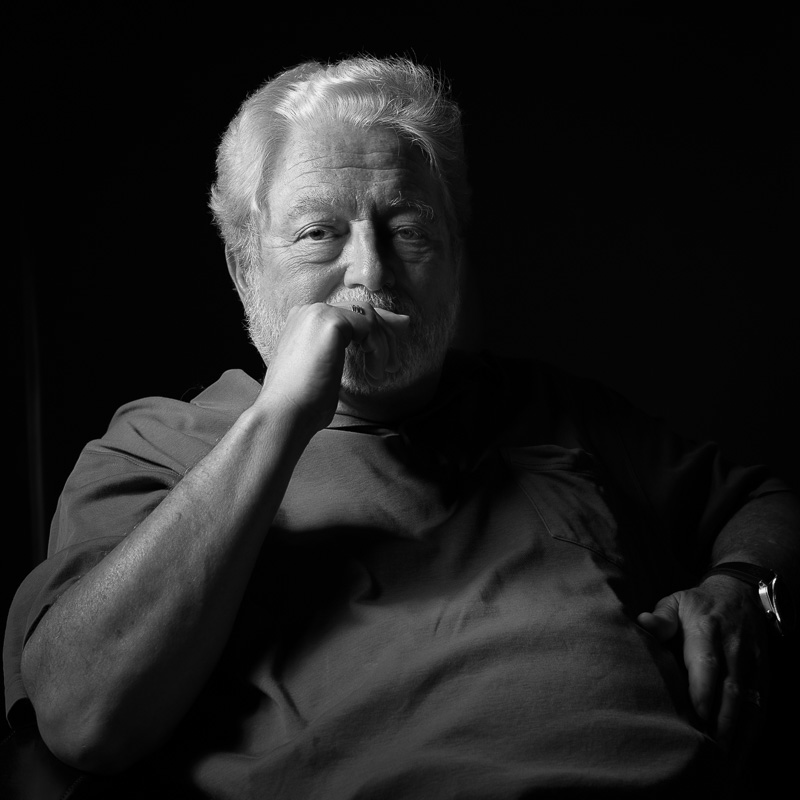 Thinking Deep Thoughts
Thinking Deep Thoughts
Pentax 645Z, 55mm, f8, ISO100
Here's the kicker......the 21MP, 'lowest' quality jpegs were, on-screen, just amazing. Converted to B&W, and tweaked quite a bit in LR, they are gorgeous. This is not surprising, really, since a 20MP MF back was the state-of-the-art not that long ago. And guess what – a file of this size is still pretty darn excellent, and fully up-to-par for almost any professional application. (Of course, this fact has a lot of implications, which we address further down.)
The quality of the JPG produced in-camera is significant. We had no time to test this, but the "Z" clearly produces a terrific file through its on-board processing. I have no idea how the camera down-samples to 21 from 50MPs, but it's doing something right. Pros in a lot of the "Z"'s target markets (we're looking at you, wedding folk) might find this a tremendously useful capability, shooting RAWs on one card and jpegs on the other. Potent.
Really knowing how good the 50MP CMOS sensor is, compared to its larger CCD brethren, would require a lot of lengthy, detailed work. Our basic impression, however, is that the "Z" produces beautiful results that no one will be disappointed by. How 'robust' the files are in aggressive post-processing is a question we would like more time to answer, but any differences vis-a-vis the rest of the field will not be that large.
All of this comes in the context of a camera with amazing high ISO capabilities. CCDs simply cannot compete on that front at all. Bottom line is superb IQ.
Shutter-Shake
One of the other factors that led Nick to sell the 645D was a nagging sense that first-curtain shutter vibrations were degrading shots taken even on the heaviest tripod. Pentax seems to have done something about this. The shutter no longer produces the guillotine-like impact on opening that marred its predecessor. We also saw no evidence of degraded IQ at the 'high-risk' shutter speeds. In fact, the barn at sunset shot (below) was taken with the camera braced on a fence-post. If the shutter were still a problem, this shot should have shown it.
Kudos to Pentax for having fixed this problem.
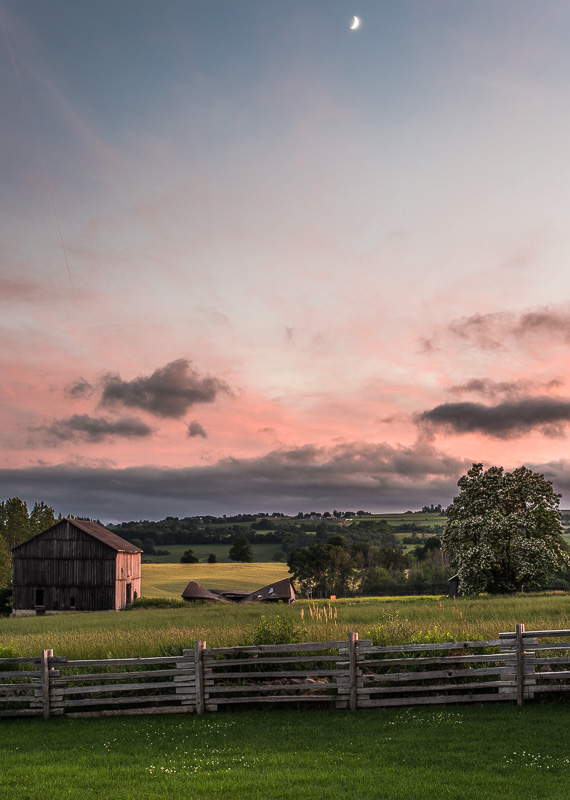 Sunset Moonrise - Clearview, Ontario, July, 2014
Sunset Moonrise - Clearview, Ontario, July, 2014
Pentax 645Z, 55mm, 0.3s @f8, ISO 100
Other Use Issues
The "Z" has 35mm SLR genes, and it shows, in a good way. The battery is a bog-standard $25 model. In addition to being cheap and plentiful, it runs forever, compared to its $250 brethren on the competitor's MF cameras. Nice. One can also buy a Pentax IR remote for next to nothing, along with an economical GPS module. Nice.
More importantly, perhaps, the camera feels good in the hand. It's big, but it fits. And it's weather sealed. Bit of sand? Just hose it off. While we think it's foolish, people have done this and posted videos on the web. Only the new lenses are weather-sealed, but this kind of protection on a field camera of this value is wonderful. I would never hesitate to take this camera out, anywhere, whereas I worry every time the Hassy leaves the bag.
The "Z" is a real working pro's field camera in every sense. It's a camera that's almost never annoying to use, and will no doubt be a trusty companion for years of use. I suspect the people who buy them will grow to love them.
The Use-Proposition
So here's the rub. Five years ago, the "Z" would have been a photographer's wildest fantasy. An MF camera with world-leading high ISO, and live view, all under $10K. Why then did it induce a bit of a shrug in both of us? The answer has a couple of facets. First, the camera is big. Coupled with a brace of lenses, this system is a serious commitment to carry around. In photography, mass=hassle. There is simply a high physical price to pay to use this kind of gear.
Second, the field has filled-in from below in stunning fashion. Not long ago, nothing could rival MF backs, notwithstanding their usability deficits. That's all changed. The Nikon D800e/810 produces very similar results at a third the price, with a much broader range of high-quality lenses available, also at a lower price. More recently, the Sony A7r puts similar IQ into a camera the size of a cigarette pack. And for the traveller-type, the Fuji X and Olympus Micro 4/3rds systems offer terrific IQ in pint-sized packages.
Remember the accidental 21MP jpeg? An Oly OM-D-E-1M-D-M-E-whatever produces a gorgeous 16MP file. Not all that much of a difference in the vast majority of applications.
Put simply, who really needs a run-'n-gun MF camera? The high ISO is amazing, yes. The file is huge, yes. The usability is on par with 35mm FF, yes. But it costs a lot and is big and heavy. So why? Moreover, any erosion in the discipline required for maximum IQ (tripod, stopped down, etc) will have some impact on the quality derived from the machine. With the quality of the vastly cheaper next-step-down nipping at MF's heals, it's not clear who will find it worthwhile.
The real problem with this camera, ironically, is that it is so usable that it invites the sort of run-'n-gun work that will inevitably degrade IQ, despite its enjoyability and convenience. So you can very quickly find yourself with a file that has little advantage over one from an A7r....
For the past few months, Nick has had the use of a top-end Hassy camera. It's like using a 486 computer, has no weather sealing, is an anvil to carry, and there's no point moving it off ISO 50. But when all the rigour and discipline needed to max-out IQ is applied, the results are awesome. BUT! The Hassy is unusable
unless used slowly, and properly, in the right conditions. I get no crappy images from it, because under sub-optimal circumstances, I wouldn't bother using it. Ironic, no? The fact it's hard to use makes me a better user. And I'm actually not sure I want to move away from that paradigm. I'd prefer the 645z's usability and durability for sure. But in work-style, I like what the Hassy makes me do. If I need or want speed and convenience, I use a smaller system.
Michael, on the other hand, has been working with the 36MP Sony A7r of the past 6 months plus, and is more than happy with its image quality, especially when using a few of the Sony/Zeiss FE lenses. If medium format shooting technique is used...large, heavy tripod and precision head, careful focusing, etc, the files produced by the Sony leave little to be desired, even on exhibition quality 22X30" prints. DxO's ranking puts the A7r almost at the top of all current cameras, and with good reason. We don't know how the 645Z will rank yet, likely quite high, but then there's the issue of price.

It was 2005 when Pentax first announced that they would be building a medium format digital camera. Unless your memory stretches back to pre-digital days you may not know that Pentax was one of the major medium format camera makers, with several very popular 645 and 67 format camera over several decades. But unlike many camera makers who were sideswiped by the digital bus, Pentax hung in and in 2010 delivered the Pentax 645D. Nick had some initial comments and an interview with Bill Gouge of Pentax Canada in September 2010, and a more comprehensive review of the camera in November of that year.
Now it's mid-year in 2014, almost seven years on, and Pentax has just started to ship their next-generationPentax 645Z. Though the "Z" looks a lot like the "D" a great deal has changed. Here then, for those who have not already memorized the product brochure, are the more salient points...
– 51.4 million pixels, 43.8 x 32.8mm large CMOS image sensor. This is the same Sony fabricated sensor as found in the Hasselblad H5D-50c and Phase One IQ250.
– 3.2" articulated 1.3M dot LCD with Live View and a large prism 98% coverage optical viewfinder system.
– ISO range from 100 – 204,800
– 3 fps continuous shooting
– 27 autofocus points including 25 cross-type sensors
– 1920X1080 HD video 60i/30p/24p
– video capability
Even a cursory look at the major specs shows that the most significant new feature is the use of Sony's new CMOS 43.8 x 32.8mm sensor, now also used by Phase One and Hasselblad. This is the first medium format CMOS sensor and consequently brings heretofore unavailable features in MF, such as higher frame rates and high ISO, as well as proper Live View and video capability.
Of course just because cameras use the same sensor doesn't mean that they are the same when it comes to image quality. The entire imaging pipeline from the sensor onwards is proprietary to each maker and therefore small to moderate difference (maybe even major ones) are to be expected.
Before going further, let's just clarify that strictly speaking 43.8 x 32.8mm is not what was called medium format in the film days. It is some 63% smaller than 645 film, though it is 1.7X larger than full frame 135mm format.
Got it? Does this really matter? It is what it is, and comparisons to film formats aren't really relevant. Just keep in mind though that this format has a .8X factor when it comes to calculating lens coverage. That's about the only thing that should be noted. Keep in mind as well that this is the same size as the sensor in the Leica S, and we don't hear too many people complaining about that.
User Interface
Next, let's consider the user interface and user experience of working with the 645Z.

Depending on your age and experience in photography this may be seen as either a good thing, or a bad thing. Lovers of simplicity (the Leica S approach) will likely find the 645Z to be confusing and even intimidating. On the other hand, a photographer who wants to have every control at his or her fingertips, will consider the new Pentax to be just the ticket.
That said, we found a hard-to-quantify but nonetheless palpable 'thickening' of the control interface from the previous 645D. While there are only a couple more buttons, a number of the core controls lacked the transparency and fluidity of the original camera. It may be that over a period of time this will disappear for experienced users, but Pentax did over do it a bit here. The 'Green' button on the back is a prime example. It is a shamelessly modal control, and badly out of place on a camera where virtually every control is first-order obvious. The presence of JPEG WB controls on the four-way controller is another fail and a hold-over from the company's consumer APS-C cameras (Pentax is not alone in including ridiculous controls like this on the ubiquitous four-way). Auto ISO is a particularly badly implemented control, and we mention that below.
But we have to put these relatively minor critiques in context: the 645Z is light-years ahead of any other MF-class camera, and frankly better than just about all of the FF 35mm machines in user interface. Using a Phase or Hassy body is pure agony after handling a "Z". Many of the controls are blessedly well done, such as the pop-up menu that appears when one hits "INFO" during image review, which displays thumbnails of the four review options (eg: with or with histo, 3-colour histo, etc), between which one can quickly scroll.
The "Z" is still a great user's camera.
One simple example: I (Nick) still can't get the H4D I use to marry mirror-lockup to self-timer. And I have to reset all of this everytime I power-up. By contrast on the "Z", two touches on the controls puts you in 2-second self-timer to which mirror-lockup is automatically linked! It's almost like an actual photographer was involved in the design. Revolutionary.

Pentax 645z, 120mm, 1/500th @ f8, ISO100
Focusing
One of the reasons Nick sold his 645D was that it had trouble focusing accurately at middle distances – a plague of MF cameras. In our brief testing the "Z" performed far better in this regard, not only as predicted in Liveview, but using the camera's phase-detect TTL AF system as well. Objects in the sub-infinity range – typical of landscape foregrounds – were tack sharp most of the time. Liveview contrast detection AF also worked well, as expected.
Focusing speed is fine. Not great, but fine. The newer lenses are predictably much faster and more positive than the older film-era screw-drives lenses, which had a distinct tendency to hunt. The worst offender was the 120mm macro, which may be because of its enhanced range and precision of focus. While it displayed a lot of 'jiggy" AF behaviour, the results were ultimately excellent. No one will be using these cameras for high-speed AF applications, so I just don't think this really matters.
In short, focus is not an issue. The only anomaly we did see was with the new 25mm lens, which produced some inexplicably mushy shots on a couple of occasions. We didn't have the camera long enough to drill-down on this, so I will make no more comment than to say this particular lens probably requires more serious attention when focusing on distant objects which have little texture on such a wide lens.

Pentax 645z, 25mm, 1/125th @f8, ISO 100
Live View
Live view with an articulated screen is a real pleasure with MF. The screen is better than either of its competitors simply because it can be brought to an appropriate angle no matter the position of the camera. Live View works. We are all used to it now, so there's not much more to say. Landscape photographers will enjoy this development a lot.
WIFI operation
We should mention the camera's WIFI capability here as a subset of Live View. Although WIFI is not built in, one can add it for a few dollars by purchasing the oddly named "FLU" SD card. One can then establish a browser-based link to the camera. As with the other Pentax SLRs, this gives full camera control from the linked device, including touch-focusable Live View control. Working off an iPad, this functionality operated well. I could see composing and focusing on an iPad, almost like a hand-held ground glass. How much better and/or more usable this is than the other ways of seeing with the camera would depend on the user and take some time to know, but it's nice to see this functionality on the "Z".
Tethering
The "Z" sports a USB3 plug. Cabled tethering is coming in the fall, we are told. This is a must-have for commercial pros, and I really, really hope Pentax gets it right. The announcement of true tethering is kind of a big deal, as Pentax made no effort to achieve this on the 645D, and thus cut-out a vast segment from its pool of potential customers. Its inclusion on this camera shows a real commitment to making a competitive system.
Image Quality
So this is the real money-question: is the IQ up to snuff and worth the money? The short answer is yes. The files off the "Z" are superb. Nick attempted some apples-to-oranges comparisons with the H4D-60, which were limited by the different ISOs, sensor sizes and focal lengths available to us. However, when matched like-for-like as closely as possible, the "Z" produced files which closely rivalled the larger 60MP CCD chip. That said, Nick could see what felt like a greater subtly of micro-contrast and colour subtlety on the Hassy files, which were challenging to reproduce on the "Z". With a lot of playing in post, however, the difference in files came down to a matter of taste, and a small one at that. If pushed, Nick would say that the Hassy file, at base ISO 50, was a bit more robust. Simply put, nothing can (yet) beat a big CCD at optimal operating conditions.
An attempt at a studio portrait yielded a further interesting, in unintended, result. The files from the Hassy produced unmatched skin tone. No real surprise there. But the "Z" wasn't that far off. In particular, the level of detail on both, and the smoothness of skin tonality, was mutually impressive. Then the kicker....in trying to use to FLU card to send jpeg previews to an iPad as an experiment, we had accidentally set the camera to only shoot small, lowest quality jpegs. Oops.

Pentax 645Z, 55mm, f8, ISO100
Here's the kicker......the 21MP, 'lowest' quality jpegs were, on-screen, just amazing. Converted to B&W, and tweaked quite a bit in LR, they are gorgeous. This is not surprising, really, since a 20MP MF back was the state-of-the-art not that long ago. And guess what – a file of this size is still pretty darn excellent, and fully up-to-par for almost any professional application. (Of course, this fact has a lot of implications, which we address further down.)
The quality of the JPG produced in-camera is significant. We had no time to test this, but the "Z" clearly produces a terrific file through its on-board processing. I have no idea how the camera down-samples to 21 from 50MPs, but it's doing something right. Pros in a lot of the "Z"'s target markets (we're looking at you, wedding folk) might find this a tremendously useful capability, shooting RAWs on one card and jpegs on the other. Potent.
Really knowing how good the 50MP CMOS sensor is, compared to its larger CCD brethren, would require a lot of lengthy, detailed work. Our basic impression, however, is that the "Z" produces beautiful results that no one will be disappointed by. How 'robust' the files are in aggressive post-processing is a question we would like more time to answer, but any differences vis-a-vis the rest of the field will not be that large.
All of this comes in the context of a camera with amazing high ISO capabilities. CCDs simply cannot compete on that front at all. Bottom line is superb IQ.
Shutter-Shake
One of the other factors that led Nick to sell the 645D was a nagging sense that first-curtain shutter vibrations were degrading shots taken even on the heaviest tripod. Pentax seems to have done something about this. The shutter no longer produces the guillotine-like impact on opening that marred its predecessor. We also saw no evidence of degraded IQ at the 'high-risk' shutter speeds. In fact, the barn at sunset shot (below) was taken with the camera braced on a fence-post. If the shutter were still a problem, this shot should have shown it.
Kudos to Pentax for having fixed this problem.

Pentax 645Z, 55mm, 0.3s @f8, ISO 100
Other Use Issues
The "Z" has 35mm SLR genes, and it shows, in a good way. The battery is a bog-standard $25 model. In addition to being cheap and plentiful, it runs forever, compared to its $250 brethren on the competitor's MF cameras. Nice. One can also buy a Pentax IR remote for next to nothing, along with an economical GPS module. Nice.
More importantly, perhaps, the camera feels good in the hand. It's big, but it fits. And it's weather sealed. Bit of sand? Just hose it off. While we think it's foolish, people have done this and posted videos on the web. Only the new lenses are weather-sealed, but this kind of protection on a field camera of this value is wonderful. I would never hesitate to take this camera out, anywhere, whereas I worry every time the Hassy leaves the bag.
The "Z" is a real working pro's field camera in every sense. It's a camera that's almost never annoying to use, and will no doubt be a trusty companion for years of use. I suspect the people who buy them will grow to love them.
The Use-Proposition
So here's the rub. Five years ago, the "Z" would have been a photographer's wildest fantasy. An MF camera with world-leading high ISO, and live view, all under $10K. Why then did it induce a bit of a shrug in both of us? The answer has a couple of facets. First, the camera is big. Coupled with a brace of lenses, this system is a serious commitment to carry around. In photography, mass=hassle. There is simply a high physical price to pay to use this kind of gear.
Second, the field has filled-in from below in stunning fashion. Not long ago, nothing could rival MF backs, notwithstanding their usability deficits. That's all changed. The Nikon D800e/810 produces very similar results at a third the price, with a much broader range of high-quality lenses available, also at a lower price. More recently, the Sony A7r puts similar IQ into a camera the size of a cigarette pack. And for the traveller-type, the Fuji X and Olympus Micro 4/3rds systems offer terrific IQ in pint-sized packages.
Remember the accidental 21MP jpeg? An Oly OM-D-E-1M-D-M-E-whatever produces a gorgeous 16MP file. Not all that much of a difference in the vast majority of applications.
Put simply, who really needs a run-'n-gun MF camera? The high ISO is amazing, yes. The file is huge, yes. The usability is on par with 35mm FF, yes. But it costs a lot and is big and heavy. So why? Moreover, any erosion in the discipline required for maximum IQ (tripod, stopped down, etc) will have some impact on the quality derived from the machine. With the quality of the vastly cheaper next-step-down nipping at MF's heals, it's not clear who will find it worthwhile.
The real problem with this camera, ironically, is that it is so usable that it invites the sort of run-'n-gun work that will inevitably degrade IQ, despite its enjoyability and convenience. So you can very quickly find yourself with a file that has little advantage over one from an A7r....
For the past few months, Nick has had the use of a top-end Hassy camera. It's like using a 486 computer, has no weather sealing, is an anvil to carry, and there's no point moving it off ISO 50. But when all the rigour and discipline needed to max-out IQ is applied, the results are awesome. BUT! The Hassy is unusable
unless used slowly, and properly, in the right conditions. I get no crappy images from it, because under sub-optimal circumstances, I wouldn't bother using it. Ironic, no? The fact it's hard to use makes me a better user. And I'm actually not sure I want to move away from that paradigm. I'd prefer the 645z's usability and durability for sure. But in work-style, I like what the Hassy makes me do. If I need or want speed and convenience, I use a smaller system.
Michael, on the other hand, has been working with the 36MP Sony A7r of the past 6 months plus, and is more than happy with its image quality, especially when using a few of the Sony/Zeiss FE lenses. If medium format shooting technique is used...large, heavy tripod and precision head, careful focusing, etc, the files produced by the Sony leave little to be desired, even on exhibition quality 22X30" prints. DxO's ranking puts the A7r almost at the top of all current cameras, and with good reason. We don't know how the 645Z will rank yet, likely quite high, but then there's the issue of price.


